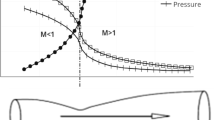Abstract
The use of horizontal reciprocating tribometers to model ring-on-liner contact in engines is common practice. The steady reduction of lubricant viscosity to improve fuel economy has produced a consequential reduction in film thicknesses at these interfaces. As a result reciprocating tribometer tests are now more often testing the resultant surface film formed in the contact by the lubricant additive package as opposed to the bulk lubricant. This has made understanding the interlinked nature of the parameters that can be set on the tribometer more essential than previously due to the increasing complexity of the tribochemistry. In this article, the parameters that can be set on these reciprocating tribometers are discussed, how they potentially impact upon the test, the interactions between the parameters and the level of representation of the engine conditions that can be achieved.

















Similar content being viewed by others
Abbreviations
- a :
-
Acceleration (m/s2)
- R :
-
Effective crank radius (m)
- s :
-
Displacement (m)
- t :
-
Time (s)—Note at time t = 0, s = 0. Systems are at mid stroke position
- u :
-
Velocity (m/s)
- ω:
-
Angular velocity (of engine crankshaft or tribometer spindle) (rad/s)
- e:
-
Engine
- r:
-
Reciprocating tribometer
- TDC:
-
Top Dead Centre
- BDC:
-
Bottom Dead Centre
References
Czichos, H., Becker, S., Lexow, J.: International multilaboratory sliding wear tests with ceramics and steel. Wear 135, 171–191 (1989)
Lee, P.M., Priest, M., Stark, M.S., Wilkinson, J.J., Lindsay-Smith, J.R., Taylor, R.I., Chung, S.: Extraction and tribological investigation of top piston ring zone oil from a gasoline engine. Proc. Inst. Mech. Eng. J 220, 171–180 (2006)
Priest, M., Dowson, D., Taylor, C.C.: Predictive wear modelling of lubricated piston rings in a diesel engine. Wear 231, 89–101 (1999)
Priest, M.P.: The wear and lubrication of piston rings. Ph.D. Thesis, University of Leeds, p. 214 (1996)
Lee, P.M., Morina, A.: Comparison of the tribofilms formed on piston ring and cylinder liner in a fired engine, motored engine and reciprocating tribometer (in preparation)
ASTM Standard D6984-09: Test Method for Evaluation of Automotive Engine Oils in the Sequence IIIF, Spark-Ignition Engine. ASTM International, West Conshohocken, PA (2009). doi:10.1520/D6984-09, www.astm.org
ASTM Standard D7484-08: Test Method for Evaluation of Automotive Engine Oils for Valve-Train Wear Performance in Cummins ISB Medium-Duty Diesel Engine. ASTM International, West Conshohocken, PA (2008). doi:10.1520/D7484-08, www.astm.org
ASTM Standard G181-04: Practice for Conducting Friction Tests of Piston Ring and Cylinder Liner Materials Under Lubricated Conditions. ASTM International, West Conshohocken, PA, (2004). doi:10.1520/G0181-04, www.astm.org
Author information
Authors and Affiliations
Corresponding author
Rights and permissions
About this article
Cite this article
Lee, P.M., Chittenden, R.J. Consideration of Test Parameters in Reciprocating Tribometers Used to Replicate Ring-On-Liner Contact. Tribol Lett 39, 81–89 (2010). https://doi.org/10.1007/s11249-010-9590-8
Received:
Accepted:
Published:
Issue Date:
DOI: https://doi.org/10.1007/s11249-010-9590-8




